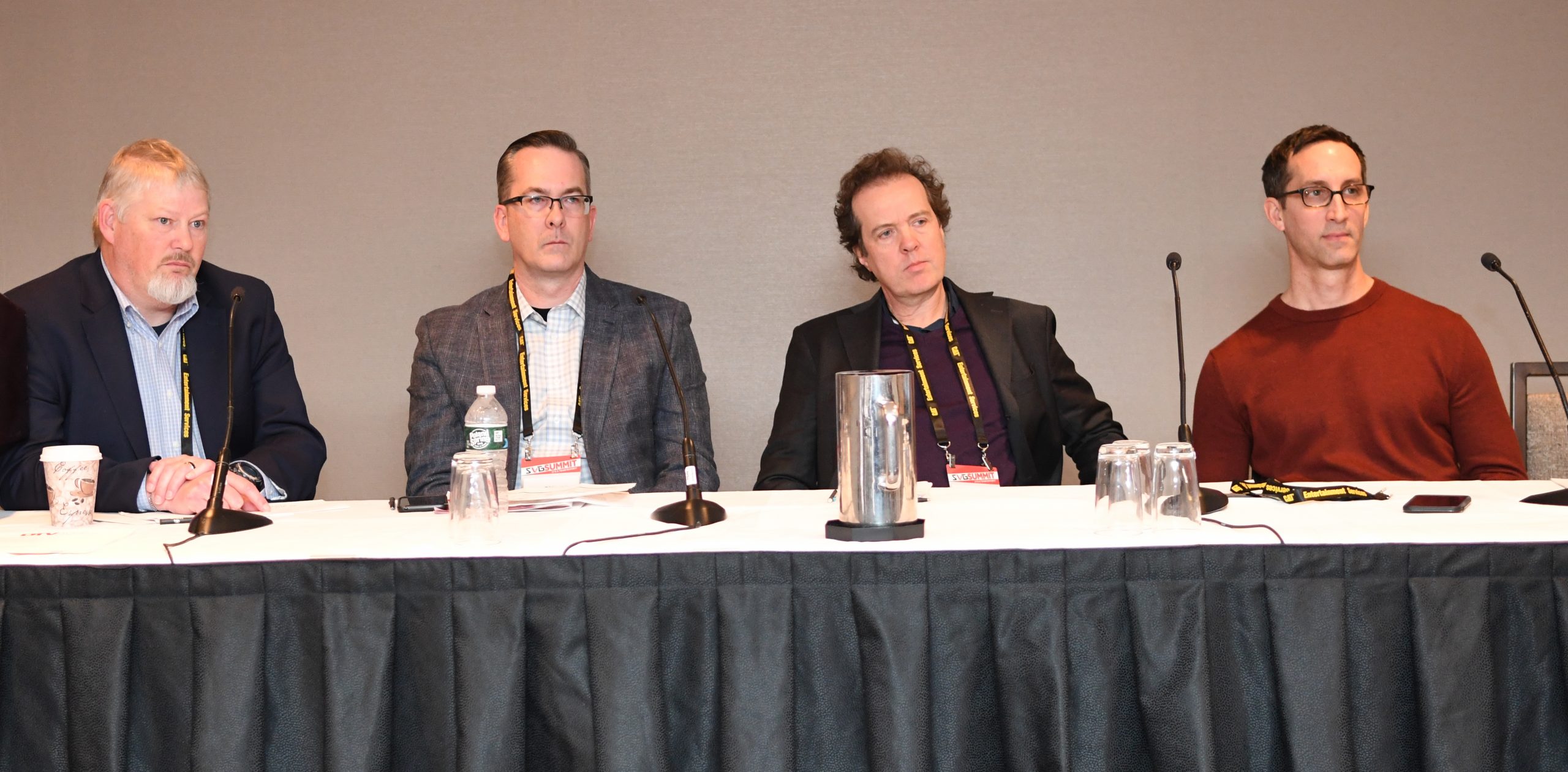SVG Summit: DTV Audio Group Conclave Reflects the Evolution Evident on the Video Side
Virtualization, new ways of capture, and a glimpse ahead to Tokyo 2020 topped the agenda
Story Highlights
The annual SVG Summit this week continued a trend of growing attendance, as broadcast sports undergoes an inflective round of changes, from 4K to immersive audio, and the term broadcast itself hints of incipient antiquity as streaming becomes the basis for a growing percentage of content distribution.
That was evident at the DTV Audio Group (DTVAG) meeting on the first day of the two-day Summit. It began with an acknowledgment that television’s infrastructure is “more virtualized and fungible than ever; it’s necessary to move more quickly than ever when it comes to audio,” as one opening comment put it. And the trend toward virtualization extends to microphones and consoles and to distribution.
Virtualization of audio processing was brought to the fore in a presentation by Ben Davis, sales manager, North America, Waves Audio, which develops plug-ins — digital models of the kinds of processors that once filled racks in control rooms and remote trucks and now reside as code on laptops. Issues of reliability have long been addressed, with these types of processors now common not only in music production but also in live-sound and concert applications, which have the same criticality as live sports.

The DTV Audio Group panel on Audio and Communications for Virtualized Remote Production: (from left) Glenn Stilwell, audio operations manager, Pac-12 Networks; Thomas Carlisle, senior broadcast engineer, Sneaky Big; Karl Malone, director, sound design, NBC Sports and Olympics; Mark Stephens, global tech lead, media and entertainment partners, AWS
In addition, Davis pointed out, virtualized plug-ins reduce weight and, by extension, cost on remote productions, and they offer standardization of processing between truck and studio. Moreover, the large pool of plug-ins developed over the past several years — more than 300 just from Waves — has seen the arrival of units intended for broadcast use: for example, the Dugan Automixer and WNS noise suppression have been applied by networks like ESPN, by leagues including the NBA, and at such events as the US Open Tennis Championships. A forthcoming “super rack” of plug-ins will offer a slew of processing with >7-ms latency, “round trip,” Davis stressed.
A look at how audio and communications are being virtualized in remote production revealed a consensus around the need for the A1 to better manage the audio teams and make clear what the audio elements will be in a communications system well ahead of an event’s start time. That’s becoming easer, it was agreed, with remote production increasingly moving onto networked infrastructure. Also, more production is being done in a REMI-type environment, in which participants on a comms network range from onsite to in the plant, all needing simultaneous and reliable communications. Ultimately, much of comms and other audio tasks will migrate to a cloud-based environment, once concerns about latency are addressed, but this particular discussion ended with acknowledgement of the need for the next generation of audio engineers to be as fluent in IT as in sound.
Microphones aren’t getting virtualized but are becoming more flexible. Shure explained how its MXA910 ceiling array of microphones developed for corporate applications was recently installed under the scoreboard at Toronto’s Scotiabank Centre. On the same panel, Sennheiser outlined how its Sports Microphone Array could ultimately interface with Lawo’s Kick ball-tracking system in the form of a cross-branded productized version of the two platforms.
An examination of sound design and integrated post and graphics workflows for Dolby Atmos in live sports production underscored the need to build workflows with objectified audio in mind, preparing for a time when personalized broadcasts allow viewers to customize their television-sound experience by changing and moving the location and types of such elements as languages and announcers.
A look toward next summer’s 2020 Tokyo Olympics indicated deployment of more remote production than ever for an Olympics show, and with a full IP routing core. NBC Sports will operate eight control rooms in Stamford, CT, (twice as many as were constructed for the 2004 Athens Games). Notably, the broadcaster will present eight events in 1080p HDR and Atmos immersive sound, including the Opening and Closing Ceremonies, gymnastics, diving, and golf.
Audio for esports, broadcast sports’ hottest development, appropriately closed the DTVAG session, foreshadowing some of what was to come at a larger esports panel the next day. Unsurprisingly, esports infrastructure is increasingly migrating into cloud environments, and its sound will follow but will almost certainly remain stereo, limited by the apps (mainly Twitch) largely used to distribute it and by the fact that so much esports content is consumed via mobile devices by users wearing earbuds.
But one major change in the esports industry is that the leading leagues, such as Overwatch, have successfully lobbied for teams to build and play in home arenas, versus the centralized venues that have in recent years hosted most major tournaments. The era of home and away esports games is slated to begin broadly in 2020, making esports even more resemble conventional sports structures.
Plus ça change, plus c’est la même chose.
